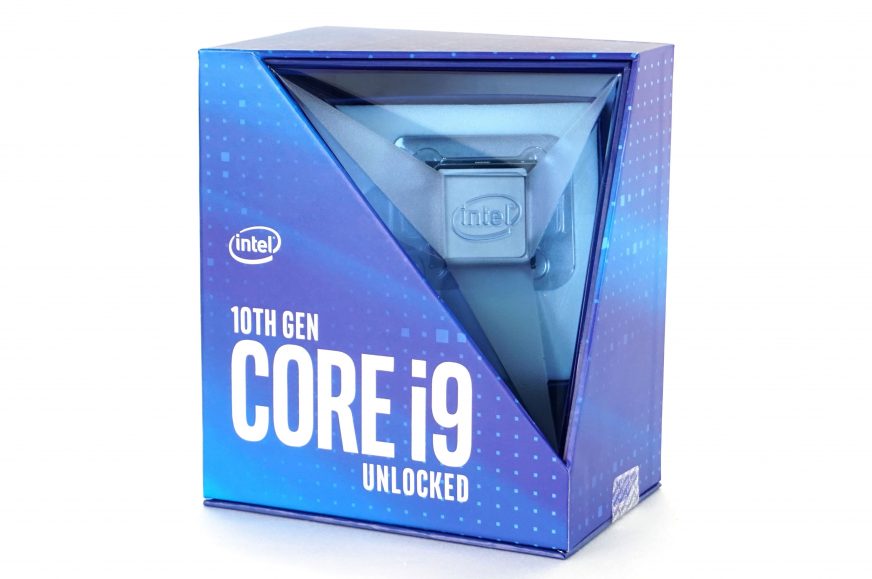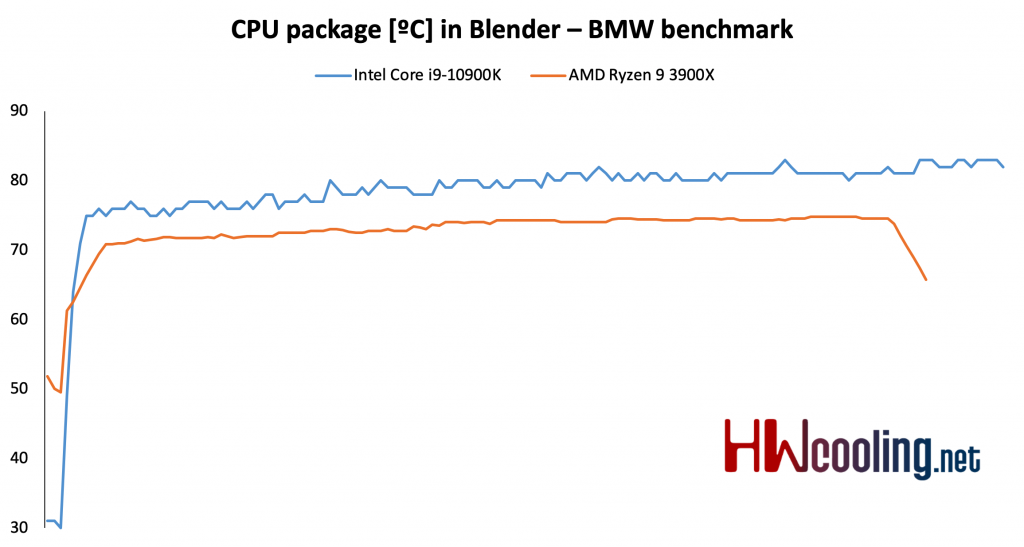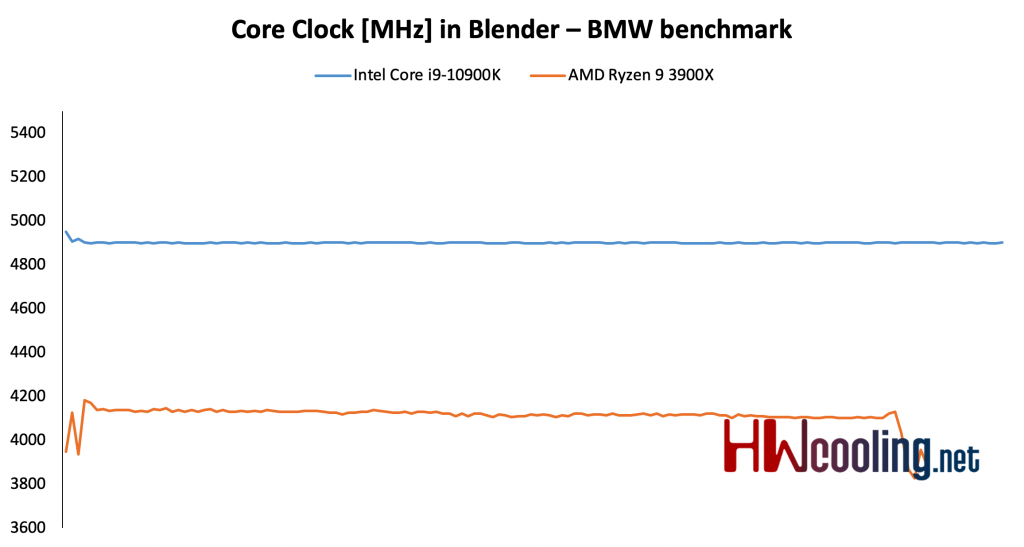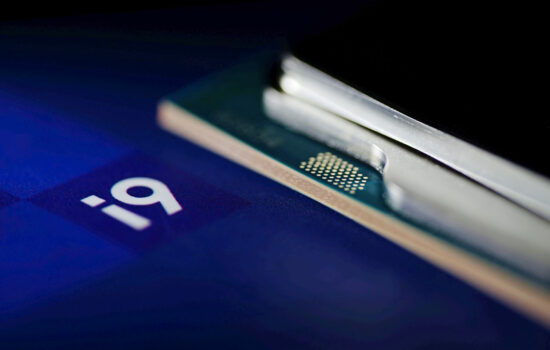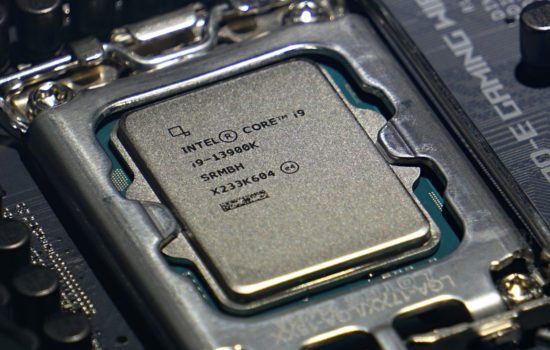Heating and power draw
The 10th generation of Intel Core processors, called Comet Lake-S, is the latest iteration of Skylake and, unlike the mobile Ice Lake, is still 14 nm. However, this constant tuning of this manufacturing process has resulted in record frequencies that are specifically related to the most powerful processor currently in the LGA 1200 socket. Now the only question is whether this will be enough for the Ryzen 9 3900X.
Heating
This section will be key to the 10900K rating. The difference in maximum temperatures is 5 degrees, which is not as bad as might be expected. In practice, the temperatures are lower, these are really the highest values across all tests. Typically, both processors are around 65 degrees in load and up to 75 degrees in demanding applications. The maximum was recorded during long renders.
A closer look at the temperature in practice shows that 10900K immediately after the start of the render jumps to 75 degrees and from there only grows further until it stops between 81 – 83 degrees. On the contrary, AMD is growing more slowly and from 70 degrees to a maximum of 74 degrees Celsius. It does not even reach 75 ºC.
Power draw
The biggest problem of the Core i9-10900K is definitely the power draw. It is extremely high, literally. CPU package at maximum load takes up to 90% more watts than AMD. System power draw also shows a 36% difference to Intel’s detriment. Although the percentages may not sound so threatening, the real numbers do. The almost double difference in CPU package from 145 to 276 W is enormous and the 85 W difference in system power draw is also not negligible.
Again, a look at the real world, AMD reaches a maximum of 145 W in Blender, while Intel jumps between 240 – 250 W. 250 W corresponds to the PL2 limit of the processor. According to Intel, it should be only 56 seconds but as can be seen on the tested motherboard, this limit is boundless. This way the motherboard manufacturers allow the 10900K to run in Turbo over a long period of time.
Clock speed
The power draw corresponds to the clock speed, where the 10900K stays stable at 4.9 GHz which is the maximum all-core boost under TVB limit. This is surprising, as according to the graph the temperature was higher than 70 degrees. Again, the “original” limits of the processor were exceeded by the motherboard manufacturer to achieve better results. Ryzen is moving around 4100 – 4150 MHz.
- Contents
- 10th generation, 10 cores
- Rendering and Geekbench
- Gaming, graphics tests and PC/3DMark
- Encryption, encoding and memory tests
- Heating and power draw
- Rating





